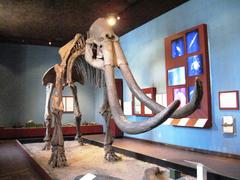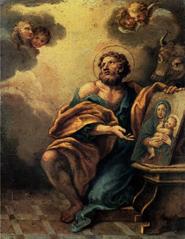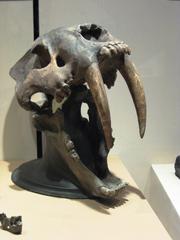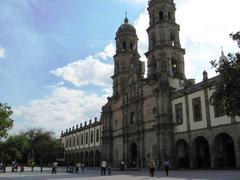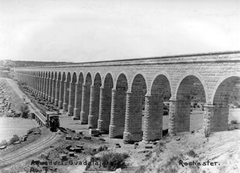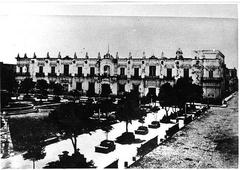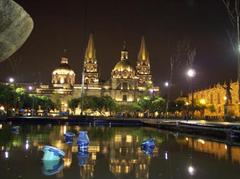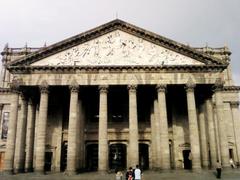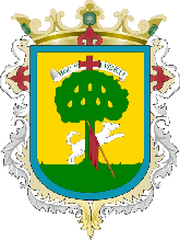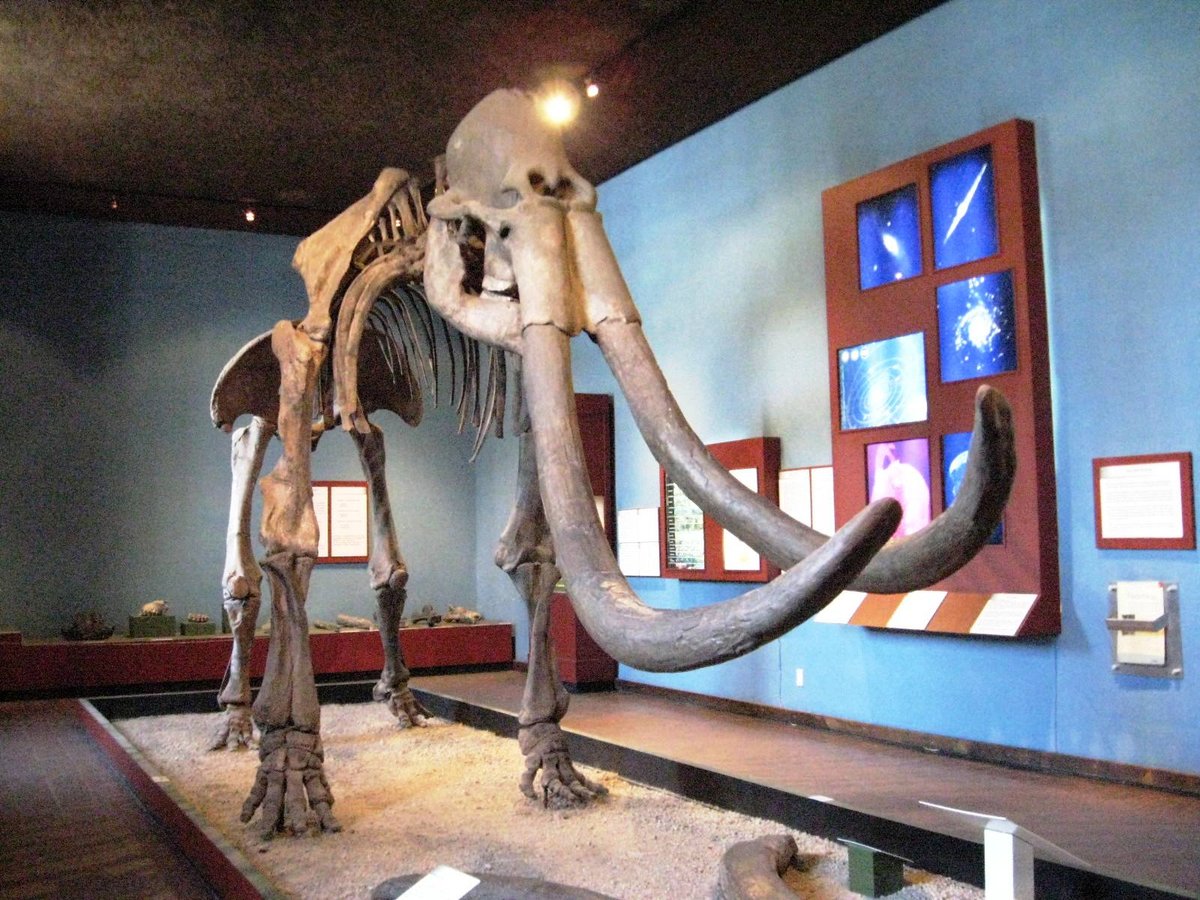
Guide to Visiting Museo Regional de Guadalajara
Publication Date: 19/07/2024
Introduction
The Museo Regional de Guadalajara, located in the vibrant city of Guadalajara, Mexico, is a cultural gem that offers a fascinating journey through the region’s rich history. Established in a building originally constructed as a Jesuit seminary in the 18th century, the museum has served various purposes over the years, reflecting the dynamic historical landscape of the area. The museum’s architecture, characterized by its robust stone walls, high ceilings, and central courtyard, is a testament to the Baroque style prevalent during its construction (Guadalajara Architecture).
Visitors to the museum can explore an extensive collection of artifacts that chronicle the region’s history from pre-Hispanic times to the modern era. Highlights include pre-Columbian artifacts, colonial-era religious art, and exhibits from the Mexican War of Independence and the post-independence period. The museum also plays a vital role in the cultural and educational landscape of the city, hosting temporary exhibitions, workshops, and educational programs aimed at fostering a deeper understanding of the region’s heritage (Cultural Programs).
For those planning a visit, the Museo Regional de Guadalajara offers a range of visitor amenities, including guided tours, a cafeteria, and a gift shop. The museum is committed to accessibility, ensuring that all visitors can enjoy its exhibits and programs. Whether you’re a history buff, an art lover, or a curious traveler, the Museo Regional de Guadalajara provides a comprehensive and enriching experience that delves into the cultural and historical tapestry of Western Mexico.
Contents
- Introduction
- Origins and Establishment
- Architectural Significance
- Historical Exhibits
- Pre-Hispanic Artifacts
- Colonial and Independence Era
- Post-Independence and Modern Era
- Visitor Information
- Hours
- Tickets
- Accessibility
- Travel Tips and Nearby Attractions
- Special Events, Guided Tours, and Photographic Spots
- Cultural and Educational Role
- Preservation and Conservation Efforts
- Visitor Experience
- Significance in Guadalajara’s Cultural Landscape
- FAQ
- Conclusion
Guide to Museo Regional de Guadalajara - History, Visiting Hours, Tickets, and More
Origins and Establishment
The Museo Regional de Guadalajara, located in the heart of Guadalajara, Mexico, is housed in a building with a rich historical background. Originally constructed in the 18th century, the edifice served as a seminary for the Jesuits. The Jesuits, known for their educational and missionary work, were expelled from Spanish territories in 1767, leading to the building’s repurposing. It was later used as a military barracks and a hospital before being transformed into a museum in 1918 (Museo Regional de Guadalajara).
Architectural Significance
The museum’s architecture is a testament to the colonial era, featuring robust stone walls, high ceilings, and a central courtyard. The building’s design reflects the Baroque style prevalent during its construction, characterized by intricate stone carvings and grandiose facades. The preservation of these architectural elements provides visitors with a glimpse into the colonial past of Guadalajara (Guadalajara Architecture).
Historical Exhibits
Pre-Hispanic Artifacts
The Museo Regional de Guadalajara boasts an extensive collection of artifacts that chronicle the region’s history from pre-Hispanic times to the present day. One of the museum’s highlights is its collection of pre-Columbian artifacts, including pottery, tools, and ceremonial objects from various indigenous cultures such as the Aztecs, Toltecs, and Purépechas. These artifacts offer invaluable insights into the daily lives, religious practices, and societal structures of these ancient civilizations (Pre-Columbian Artifacts).
Colonial and Independence Era
The museum also features exhibits from the colonial period, showcasing items such as religious art, furniture, and documents that illustrate the Spanish influence on the region. Notably, the museum houses a collection of paintings by renowned colonial artists, including works by Juan Correa and Cristóbal de Villalpando. These paintings depict religious themes and provide a window into the artistic and cultural milieu of colonial Mexico (Colonial Art).
The section dedicated to the Mexican War of Independence (1810-1821) includes artifacts such as weapons, uniforms, and personal items belonging to key figures in the struggle for independence. This period is crucial in understanding the formation of modern Mexico, and the museum’s exhibits help contextualize the social and political upheavals of the time (Mexican Independence).
Post-Independence and Modern Era
The museum’s collection extends into the post-independence era, highlighting the cultural and industrial developments that shaped modern Guadalajara. Exhibits include items from the Porfiriato period (1876-1911), such as technological innovations, textiles, and everyday objects that reflect the modernization efforts of the time. Additionally, the museum features contemporary art and cultural artifacts, providing a comprehensive overview of the region’s evolution (Modern Guadalajara).
Visitor Information - Hours, Tickets, and Accessibility
Planning a visit to the Museo Regional de Guadalajara? Here’s what you need to know:
- Visiting Hours: The museum is open Tuesday to Sunday from 9:00 AM to 5:00 PM. It is closed on Mondays and public holidays.
- Tickets: General admission is $70 MXN, with discounts available for students, teachers, and seniors. Admission is free on Sundays.
- Accessibility: The museum is wheelchair accessible, and assistance is available for visitors with disabilities.
Travel Tips and Nearby Attractions
When visiting the Museo Regional de Guadalajara, consider these travel tips and nearby attractions:
- Travel Tips: Arrive early to avoid crowds, and consider joining a guided tour for a more in-depth experience.
- Nearby Attractions: The Instituto Cultural Cabañas, Templo Expiatorio, and the Guadalajara Cathedral are all within walking distance and offer additional cultural and historical insights.
Special Events, Guided Tours, and Photographic Spots
The Museo Regional de Guadalajara hosts special events and guided tours throughout the year. These include:
- Special Events: Temporary exhibitions, workshops, and cultural events that reflect the rich heritage of Guadalajara.
- Guided Tours: Available in both English and Spanish, these tours provide deeper insights into the museum’s collections.
- Photographic Spots: The central courtyard and the intricately designed Baroque facade are perfect for photography enthusiasts.
Cultural and Educational Role
Beyond its historical exhibits, the Museo Regional de Guadalajara plays a vital role in the cultural and educational landscape of the city. The museum regularly hosts temporary exhibitions, workshops, and educational programs aimed at fostering a deeper understanding of the region’s heritage. These initiatives are designed to engage the local community and visitors alike, promoting an appreciation for the rich cultural tapestry of Guadalajara (Cultural Programs).
Preservation and Conservation Efforts
The museum is also actively involved in the preservation and conservation of its collections. Efforts include the restoration of delicate artifacts, the implementation of climate control measures to protect sensitive items, and ongoing research to uncover new historical insights. These efforts ensure that the museum’s collections remain accessible and informative for future generations (Conservation Efforts).
Visitor Experience
Visitors to the Museo Regional de Guadalajara can expect a well-rounded experience that combines historical education with cultural enrichment. The museum’s layout is designed to guide visitors through a chronological journey, starting with pre-Hispanic times and progressing through the colonial period, independence, and modern era. Informative plaques and interactive displays enhance the visitor experience, providing context and detailed explanations of the exhibits (Visitor Information).
Significance in Guadalajara’s Cultural Landscape
The Museo Regional de Guadalajara holds a significant place in the cultural landscape of the city. It serves as a repository of the region’s history, a center for cultural activities, and a symbol of the city’s commitment to preserving its heritage. The museum’s diverse collections and educational programs make it an essential destination for anyone interested in understanding the historical and cultural development of Guadalajara (Cultural Significance).
FAQ
Q: What are the Museo Regional de Guadalajara’s visiting hours?
A: The museum is open Tuesday to Sunday from 9:00 AM to 5:00 PM. It is closed on Mondays and public holidays.
Q: How much are the tickets to the Museo Regional de Guadalajara?
A: General admission is $70 MXN, with discounts available for students, teachers, and seniors. Admission is free on Sundays.
Q: Is the Museo Regional de Guadalajara accessible for visitors with disabilities?
A: Yes, the museum is wheelchair accessible, and assistance is available for visitors with disabilities.
Q: Are guided tours available at the Museo Regional de Guadalajara?
A: Yes, guided tours are available in both English and Spanish.
Conclusion
The Museo Regional de Guadalajara stands as a beacon of cultural and historical preservation in Guadalajara. Through its diverse exhibits, the museum offers a comprehensive overview of the region’s evolution from ancient civilizations to modern times. Visitors can explore pre-Columbian artifacts, colonial art, and exhibits from the Mexican War of Independence, gaining a deeper appreciation for the rich cultural heritage of Western Mexico (Pre-Columbian Artifacts, Colonial Art, Mexican Independence).
Beyond its historical exhibits, the museum plays a crucial role in the local community by hosting educational programs, workshops, and special events that engage and educate visitors of all ages. The museum’s commitment to preservation and conservation ensures that its collections remain accessible and informative for future generations (Conservation Efforts).
For those planning to visit, the Museo Regional de Guadalajara offers a well-rounded experience with amenities such as guided tours, a cafeteria, and a gift shop. The museum’s central location and accessibility features make it an ideal destination for exploring the rich cultural landscape of Guadalajara. Don’t miss the chance to delve into the history and heritage of this vibrant region at the Museo Regional de Guadalajara.
References
- Museo Regional de Guadalajara. (n.d.). Instituto Nacional de Antropología e Historia (INAH). https://www.inah.gob.mx/zonas/guadalajara
- Guadalajara Architecture. (n.d.). Visit Mexico. https://www.visitmexico.com/en/jalisco/guadalajara
- Pre-Columbian Artifacts. (n.d.). Mexico Art. https://www.mexicoart.org
- Colonial Art. (n.d.). Mexican Art. https://www.mexicanart.org
- Mexican Independence. (n.d.). History. https://www.history.com/topics/mexico/mexican-independence
- Cultural Programs. (n.d.). INAH. https://www.inah.gob.mx/actividades-culturales
- Conservation Efforts. (n.d.). Museums Conservation. https://www.museumsconservation.org
